A classic German Butterkuchen is heavenly fluffy, moist, and topped with roasted almond slices. A hot cup of coffee makes this delicious buttery cake complete. Here is my authentic recipe, that will remind you of a German bakery.
A simple yeasted coffee cake, that is perfect for any season. An easy recipe that is perfect for unexpected visitors. If you love German Streuselkuchen you also need to try this cake.
The German red currant cake is a variation of this recipe, where the yeast base is topped with red currants and refined with ground hazelnut.
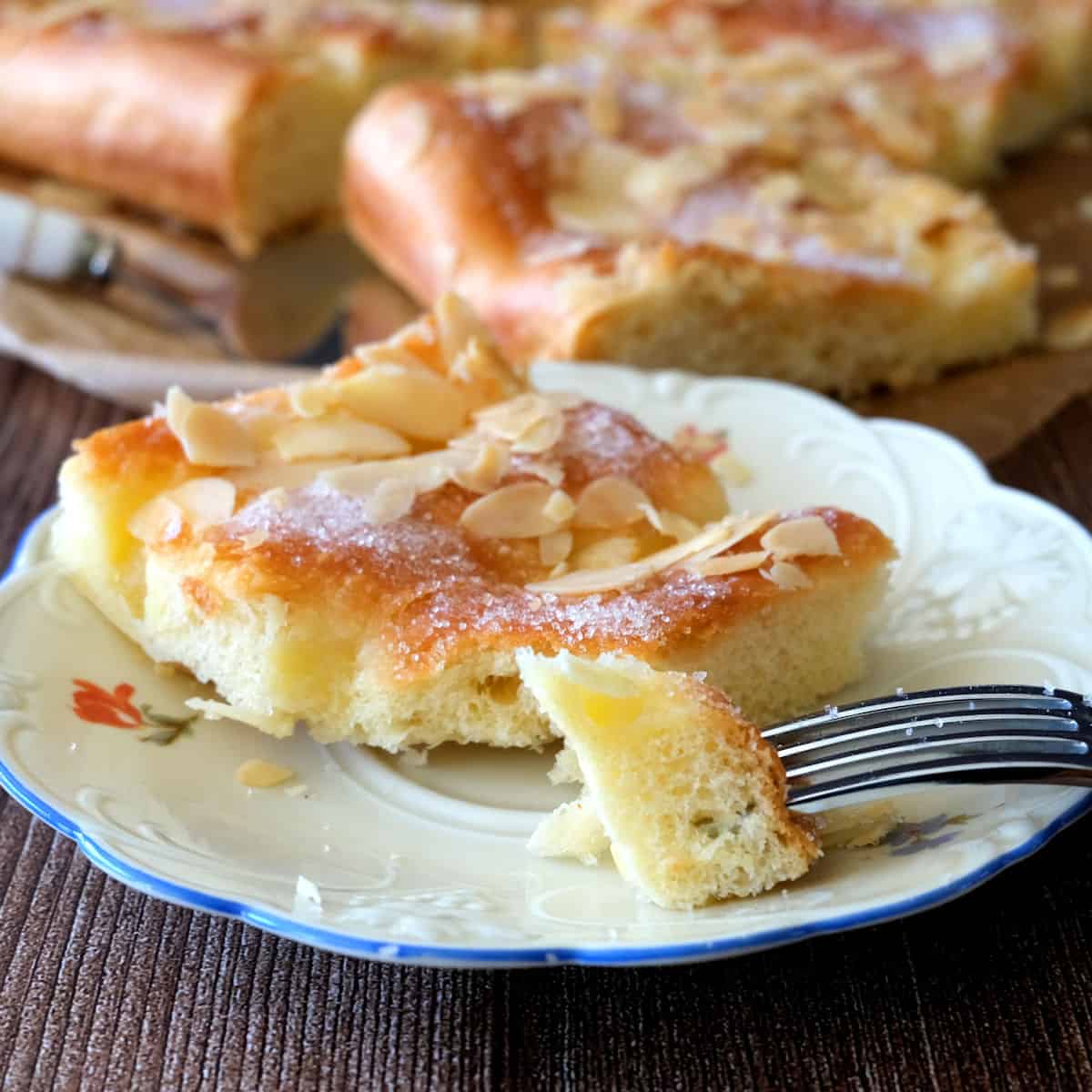
What is Butterkuchen?
Butterkuchen or Zuckerkuchen is a yeasted German sheet cake that is topped with cold cubes of mixed butter and sugar before being baked.
"Butter" means Butter, and "Kuchen" is the German word for Cake. Here is how you pronounce it.
Another term for this cake is "Zuckerkuchen"- translated as "sugar cake". You use this name when the butter is replaced with cheaper margarine. According to German guidelines Butterkuchen cannot contain any other grease but butter.
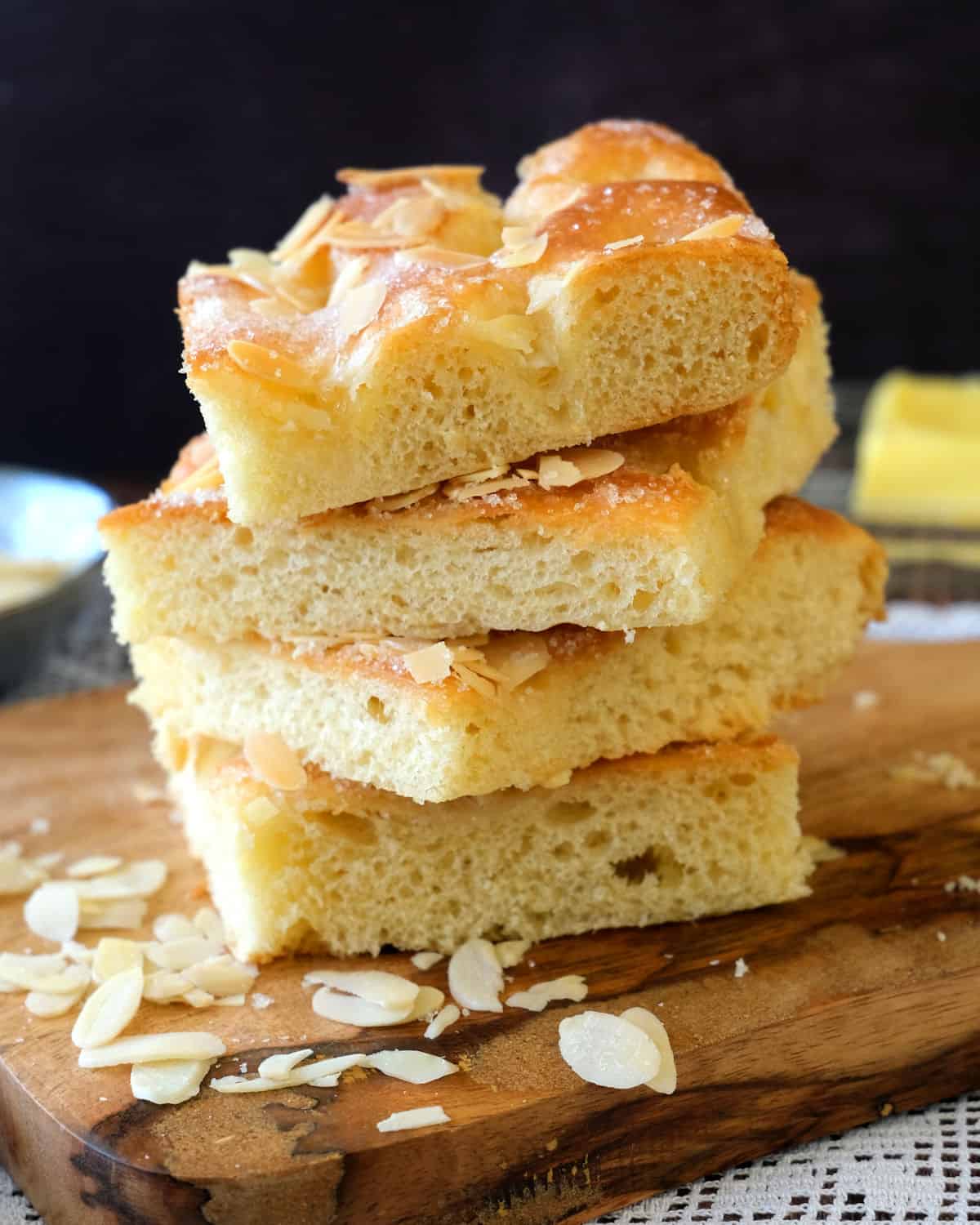
Origin and History
Buttercake has its origin in North Germany. Here it is a household cake, that is served for christenings, weddings and also funerals. This is why it also has the Nickname "Freud-und-Leid-Kuchen", which translated means "Happiness-and-Sorrow-Cake". [source:Wikepedia]
Harzburg, Bremen, Hannover, and Hamburg are all towns in Northern Germany, which have their own variations of the cake. "Booderkoken" - is what locals would call the cake.
Denmark also has a version of butter cake called Dagmar Tart, and the Dutch have their own variation called Boterkoek.
Around the 18th century, there were first mentions of a cake that was sprinkled with sugar, cinnamon, and almonds. (source, Irene Krauss 1999 - Chronik bildschöner Backwerke)
How to make German Butter Cake
The steps for making this authentic German butter cake are simple, all you need is to factor in enough time for the mix to rise.
Ingredients
- unsalted butter (one portion for the yeast dough, where it should be at room temperature, and another for the topping, where you need cold butter)
- milk
- sugar
- dry active yeast
- flour (all-purpose flour (USA), plain flour (UK))
- egg yolk (you can freeze the egg white or make German Baiser cookies or Coconut Macaroons with them)
- salt
- vanilla extract (affiliate link) (or use vanilla sugar)
- slivered almond slices
Butterkuchen Recipe (Step by Step)
- Preheat the oven to its lowest setting. 35 °C/ 95°F is ideal. However, my lowest setting is 50°C/122°F, so I briefly let some heat escape before adding my dough to rise.
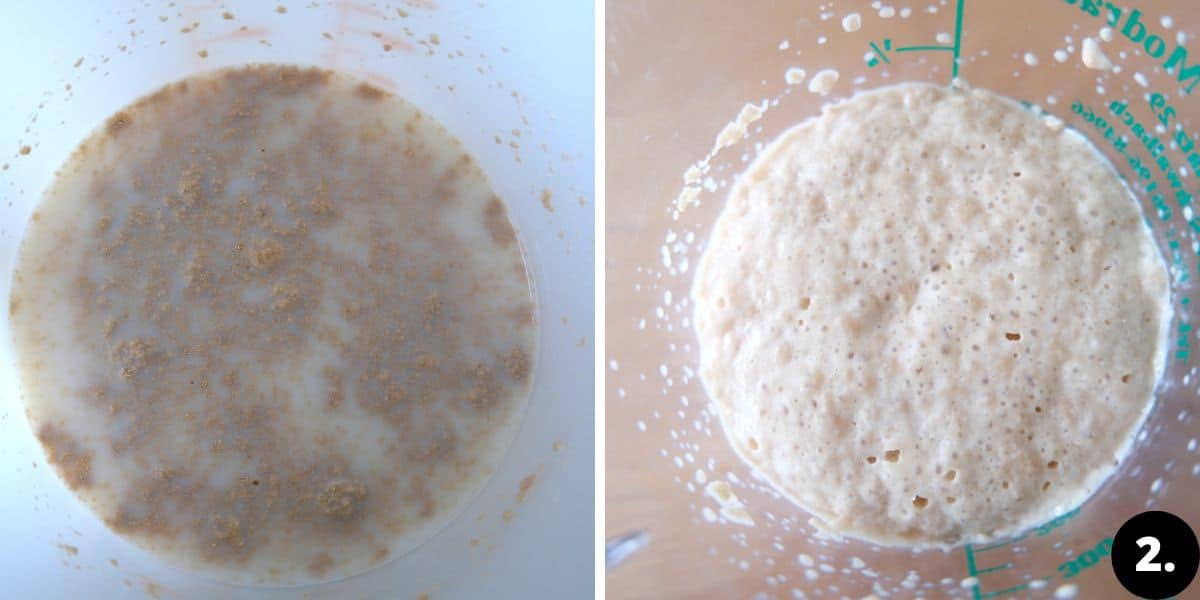
- To activate the yeast, mix together lukewarm milk, sugar, and instant yeast in a small bowl. Leave to rest for approximately 10 minutes and you will see bubbles building on the surface. If you cannot see the bubbles, the milk might have been too hot or your yeast out of date. Throw away and start again.
- In a separate mixing bowl, add the remaining ingredients for the yeast dough: flour, egg yolk, salt, butter, and vanilla extract (affiliate link). Pour over the yeast mixture and knead the dough with a dough hook for a minimum of 10 minutes to a smooth dough.
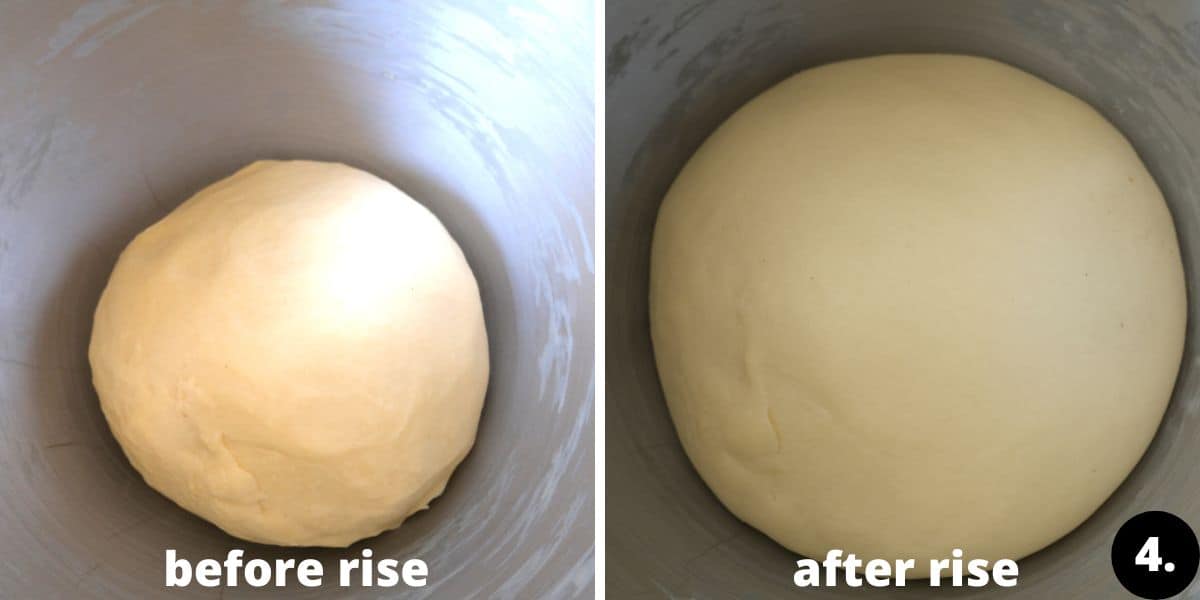
- Turn the oven off. Form the dough into a ball, place it into the bowl, and cover it with a moist tea towel. Place in the oven and leave to rise for approximately an hour. (you can also let it rise in a warm place) The dough should double in volume in that time.
- In the meantime, line a baking tray with baking parchment. My trick of keeping it in place with some clothes pegs, and then removing the pregs before placing it into the oven. (see images). You can also grease the baking tray if you prefer.
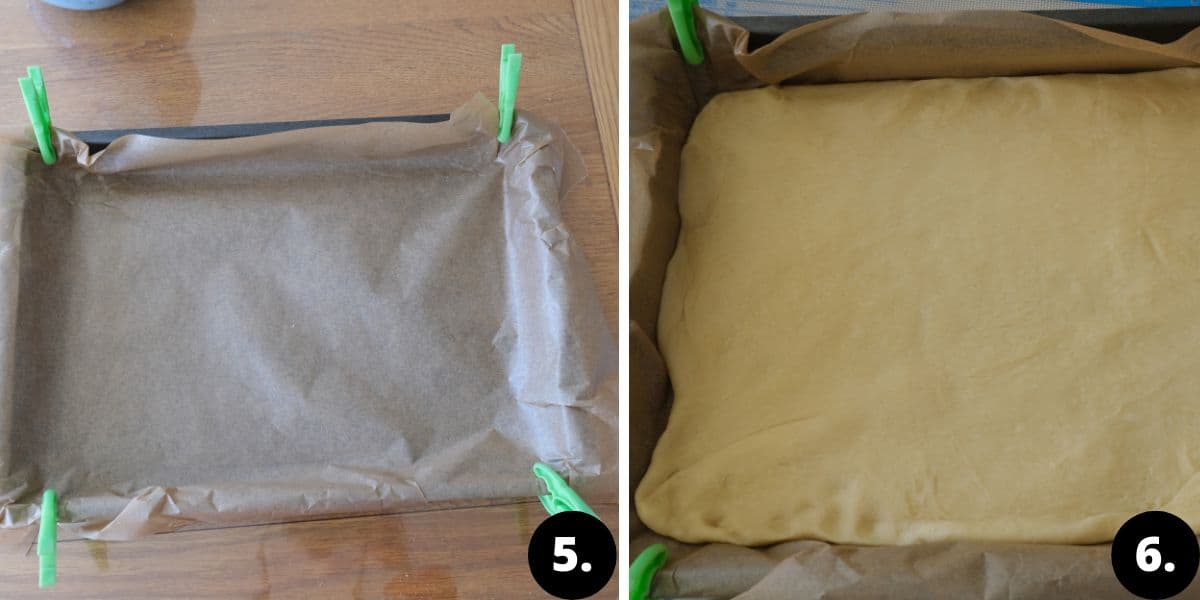
- Once the dough has risen, knead it again briefly to remove any air bubbles that build up during the rise. Now roll out on a lightly floured surface with a rolling pin (affiliate link) and then place into the baking sheet. Cover the sheet again with the moist tea towel and leave it to rise for another 30 minutes.
- Preheat your oven to 170°C / 338°F top-to-bottom heat. Take the remaining butter from the fridge and slice it into small cubes.
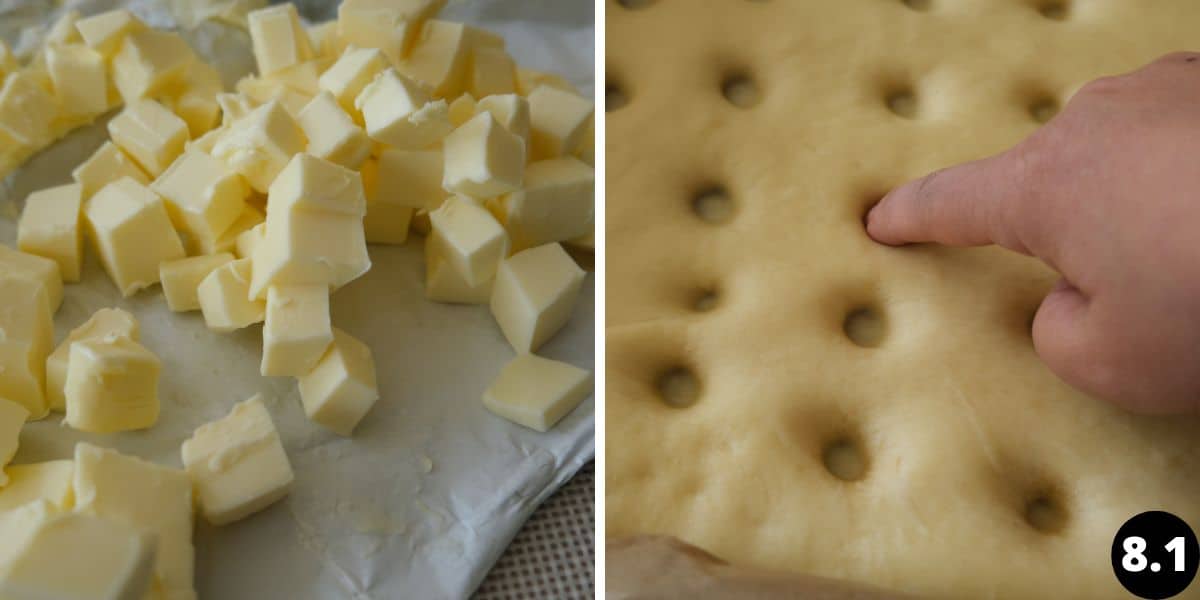
- After the second rise, make little indention holes into the cake base with either your fingers or the end of a wooden spoon. Press the cubes of butter into each one of those holes. Pour over the almonds and sugar on top of the dough and place in the oven for approximately 25 minutes.
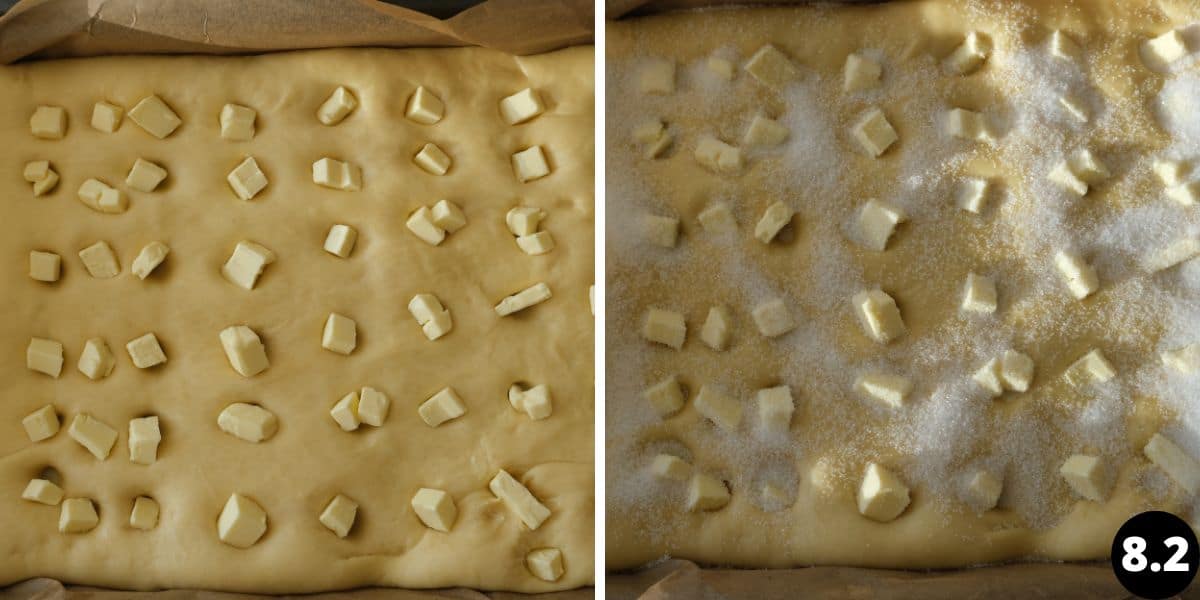
- The cake is best served lukewarm with a cup of coffee. To reheat the cake the next day, you can warm it up gently in a frying pan and melt a piece of butter on top to make it moist again.
Recipe variation
- Instead of refining the yeast dough with vanilla extract (affiliate link), you can also replace it with a teaspoon of lemon zest or ½ teaspoon of cardamon.
- The toppings can also be varied. Instead of using a combination of slivered almonds and sugar, you can omit the almonds and just sprinkle them with sugar. Another variation uses cinnamon sugar as a topping.
- If you want a caramel almond crust like you are used to from the Bienenstich Cake, melt the butter, sugar, and almonds and spread it over the cake before being baked.
- Some people swear by pouring over whipping cream, once the cake comes out of the oven. As the cake is still hot, it will absorb the cream and make it nice and moist.

What to serve with Butterkuchen
Butterkuchen is usually served with a cup of coffee. It is traditionally served at 3 pm during "Kaffee und Kuchen Zeit" (Coffee and cake time"). This is the time Germans like to take their afternoon coffee.
It tastes best the day you bake it, lukewarm, shortly after coming out of the oven.
Make Ahead
You prepare the yeast dough the night before, and then let it rise in the fridge. (1st rise) However, it is important that you let it return to room temperature before you continue, as otherwise, it will not end up nice and fluffy.
Storage Instructions
Although this cake tastes best the day it is baked, you can keep it for up to three days. Place it in an airtight container and store at room temperature.
If you find that the cake is a little dry the next day, you can gently heat it in a frying pan, and place a piece of butter on top to make it moist again.
Another idea is to soak the cake in cream or hot chocolate and then gently reheat it in the oven.
Recipe

German Butterkuchen (Zuckerkuchen or Butter Cake)
Equipment
- 1 9-Inch x 13-Inch Rectangular Cake Pan 23 cm x 33 cm
Ingredients
- 200 ml milk ¾ cups of milk + 1 tablespoon
- 50 g sugar 1.7 oz, 4 tablespoons,
- 2 teaspoon instant yeast 1 packet or 7 gr
- 375 g all purpose flour 13 oz, 3 cups
- 1 egg yolk at room temperature
- ½ teaspoon salt
- 75 gr butter at room temperature, 2.6 oz, ⅓ cup
- 1 teaspoon vanilla extract ½ cup
For the topping
- 120 g butter ½ cup, 4 oz, - cold from the fridge
- 100 g slivered almonds 3.5 oz
- 100 g sugar ½ cup, 3.5 oz
Instructions
- Preheat the oven to its lowest setting. 35 °C/ 95°F is ideal. However, my lowest setting is 50°C/122°F, so I briefly let some heat escape before adding in my dough to rise.
- To activate the yeast, mix together lukewarm milk, sugar, and instant yeast in a small bowl. Leave to rest for approximately 10 minutes and you will see bubbles building on the surface. If you cannot see the bubbles, the milk might have been too hot or your yeast out of date. Throw away and start again.
- In a separate mixing bowl, add the remaining ingredients for the yeast dough: flour, egg yolk, salt, butter, and vanilla extract (affiliate link). Pour over the yeast mixture and knead the dough with a dough hook for a minimum of 10 minutes to a smooth dough.
- Turn the oven off. Form the dough into a ball, place it into the bowl, and cover it with a moist tea towel. Place in the oven and leave to rise for approximately an hour. (you can also let it rise in a warm place) The dough should double in volume in that time.
- In the meantime line the baking tray with baking parchment. My trick of keeping it in place with some clothes pegs, and then removing the pregs before placing it into the oven. (see images). You can also grease the baking tray if you prefer.
- Once the dough has risen, knead it again briefly to remove any air bubbles that build up during the rise. Now roll out on a lightly floured surface with a rolling pin (affiliate link) and then place into the baking sheet. Cover the sheet again with the moist tea towel and leave it to rise for another 30 minutes.
- Preheat your oven to 170°C / 338°F top-to-bottom heat. Take the remaining butter from the fridge and slice it into small cubes.
- After the second rise, make little indention holes into the cake base with either your fingers or the end of a wooden spoon. Press the cubes of butter into each one of those holes. Pour over the almonds and sugar on top of the dough and place in the oven for approximately 25 minutes.
- The cake is best served lukewarm with a cup of coffee. To reheat the cake the next day, you can warm it up gently in a frying pan and melt a piece of butter on top to make it moist again.



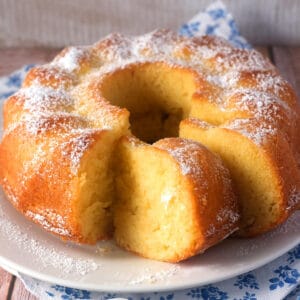
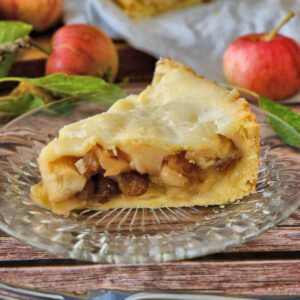
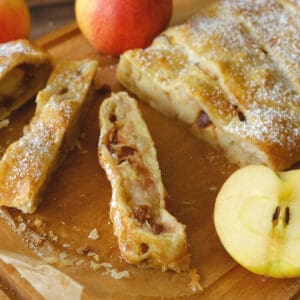

Carol
I can't wait to try this recipe! I have been looking for this for years. I remember my grandmother would bring this cake to us when she visited. Now I'm the grandmother! Lol
Marita
Hi Carol,
thanks, I hope you enjoy it!
Marita
Chris Van Epps
Hi
I wish I had the.magic fingers to bake. I made a box pineapple cake.I froze it with pineapples slices on top and in between.
It came out OK
Love your notes in between reminds me of Germany
Claudia Egger
This sounds just like my mom’s!! I also loved when she would add sliced plums or apples to the top. Thanks.
Marita
Hi Claudia,
thank you, I am glad it reminds your mum. Food has so many happy memories.
Marita